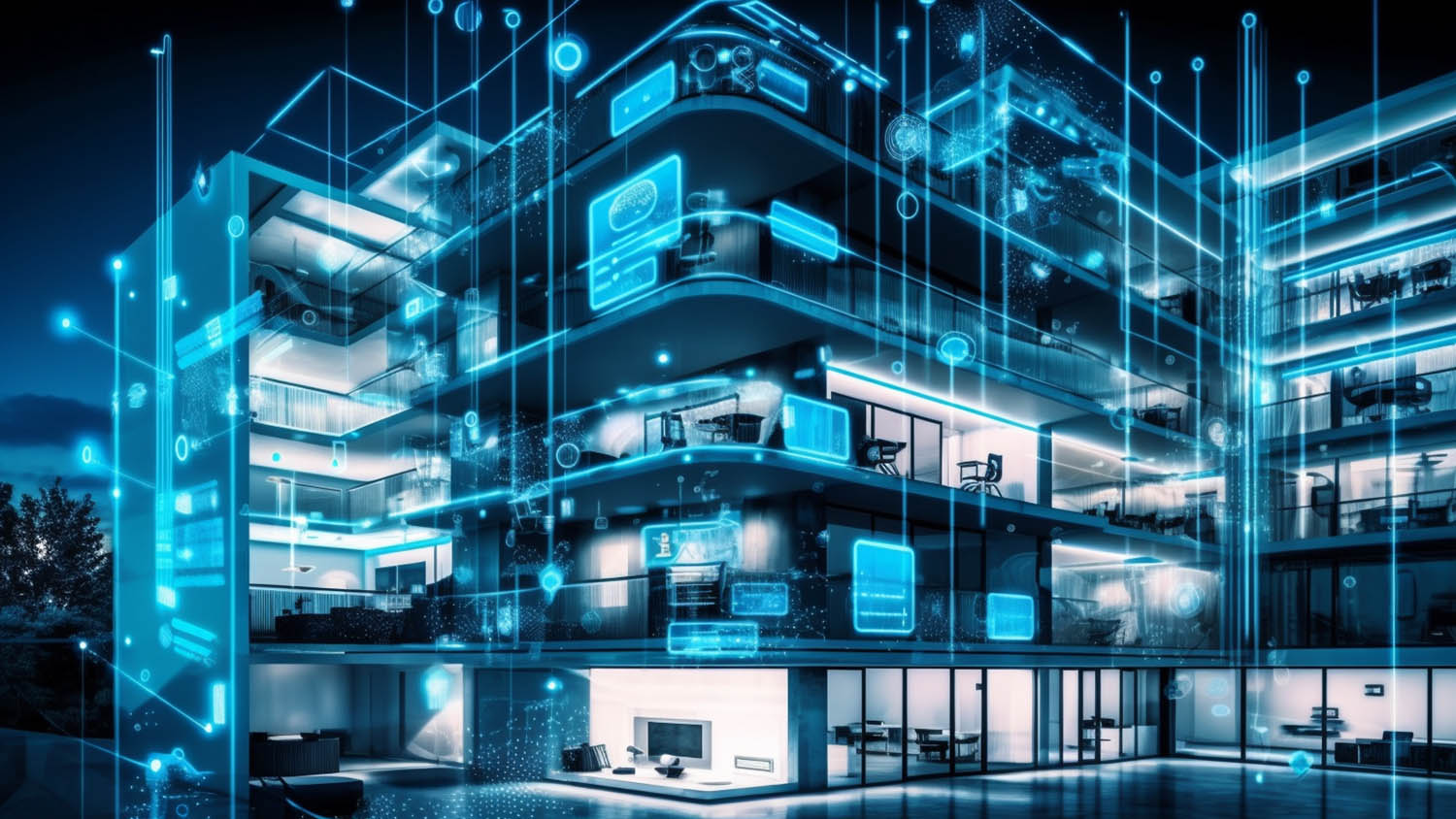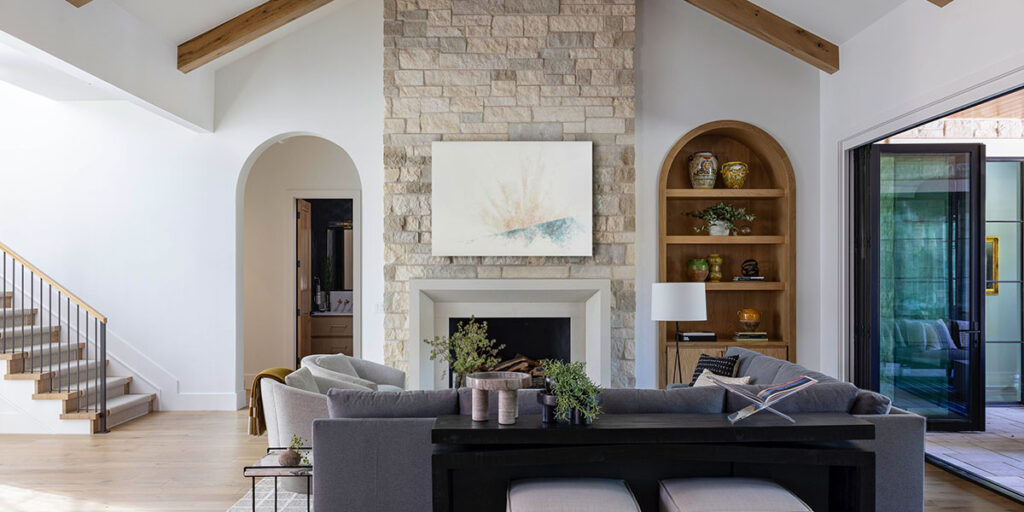By 2025, architectural trends are about creating a better future rather than merely constructing buildings. The emphasis of the worldwide discourse has changed from solely aesthetic design to one that puts the environment, human welfare, and technological integration first. Resilience, inventiveness, and a deep regard for the environment characterise this new era of design. This year’s architectural trends show a collective shift towards a smarter, more sustainable built environment, from self-healing buildings to climate-adaptive structures.
The Development of Circular and Regenerative Architectural Trends
The classic construction method of “take, make, dispose” is no longer in use. Circular architecture, a design concept that views buildings and their materials as a continuous circle, is the most popular trend for 2025. Materials are made to be deconstructed, reused, and repurposed rather than ending up in a landfill. Construction and demolition waste, which today make up an astounding amount of the world’s garbage, is greatly reduced by this method.
In order to trace each material from its source to its end-of-life plan, architects are developing “material passports” for new construction. As a result, the deconstruction process can be expedited, making it easier to salvage and incorporate components into subsequent projects. A prefabricated wall panel from one building, for example, can be utilised as a structural component in another, increasing the building’s lifespan and significantly reducing its embodied carbon footprint. In addition to preserving natural resources, this regenerative strategy makes the built environment more robust and flexible.

Capital One McLean Block A, McLean, Virginia_ ©Gensler
Technology as a Creative Partner: Artificial Intelligence (AI) in Design
AI has evolved from a tool to an architect’s creative collaborator. In only a few minutes, AI-powered generative design software can examine thousands of possible designs, evaluating elements like material consumption, energy efficiency, and structural integrity to choose the best choice. AI manages the intricate, data-intensive computations, freeing up architects to concentrate on the larger creative vision.
By 2025, AI will be used to automate time-consuming processes that used to take weeks, including checking for code compliance or producing lifelike renderings, but may now be completed in a few hours. Designers are able to experiment with more complex, unconventional forms and think more creatively because to this efficiency improvement. The Daedalus Pavilion, a 5-meter-tall lattice structure put together by a robotic arm, is an example of how AI has assisted architects in creating extremely intricate yet materially efficient structures. This shows how AI may simplify a complex design for construction. AI is expanding the realm of what is feasible in design and planning, not taking the place of the human touch.

AI Rendered residential villa_ ©Parametric Architecture
Biophilic Design: Nature’s Inherent Bond
Integrating natural elements into the built environment, or biophilic design, is becoming essential for people’s health and well-being. Architects are aggressively bridging the gap between urban spaces and the natural environment as people spend more time indoors. The overwhelming body of research showing that spending time in nature lowers stress, enhances mood and productivity, and improves cognitive function is driving this movement.
Biophilic design is more than just a few potted plants in 2025. From buildings built to optimise natural light and ventilation to living walls and green roofs that enhance air quality and control stormwater runoff, we are witnessing full-scale integration. A well-known example is Milan’s Bosco Verticale, a pair of residential towers encircled by more than 20,000 trees and bushes. In addition to improving the aesthetics of the city centre, this “vertical forest” actively reduces air pollution and fosters a favourable microclimate for locals. In order to create a sensory experience that firmly anchors us in nature, expect to see more water elements, the usage of natural materials like wood and stone, and architectural forms that resemble organic structures.

Biophilic Design Image source: luxuriousmagazine.com
Smart Building Skins and Self-Healing Materials
Materials are becoming more intelligent. Carbon-negative and self-healing materials are becoming increasingly popular due to advancements in material science. For example, incorporated microorganisms in self-healing concrete release limestone to repair fractures as they appear, thereby increasing a structure’s lifespan and lowering maintenance expenses. Ferrock, a carbon-negative building material composed of glass and recycled steel dust, is another revolutionary product. It is a sustainable substitute for conventional concrete because it collects more carbon dioxide during the curing process than it releases.
Additionally, architects are investigating “smart skins” for structures. These dynamic facades are able to change with the environment. Consider solar-powered construction materials or smart windows that automatically tint to reduce heat and glare. This technique makes buildings more effective and long-lasting by improving their performance and resistance to environmental changes.

Smart Buildings 2025
The Modular Revolution: Customisation, Efficiency, and Speed
The building business is changing as a result of prefabricated and modular construction techniques, which offer a quick, affordable, and environmentally friendly way to address housing shortages and construction delays. Architects can guarantee consistent quality, reduce waste, and significantly cut down on-site building time by up to 50% by having components manufactured off-site in a regulated factory setting.
The generic designs of the past are a long cry from the current era of modular architecture. High levels of customisation and design flexibility are made possible by developments in digital fabrication and 3D printing. Modular units are being customised to satisfy a range of needs, from emergency shelter to opulent homes, increasing accessibility to high-quality, ecological design. These prefabricated modules are even more effective and future-proof because smart technologies and sustainable materials were included into them from the beginning.

3D Printed House
Resilient Architectural Trends: Adjusting to a Changing Environment
Architects are considering climate resilience in the design of buildings and cities as extreme weather events become more frequent. Buildings that can endure and adjust to environmental pressures including heat waves, floods, and strong storms are the main emphasis of this trend. This refers to the use of “green-blue” infrastructure in urban development, which combines sustainable water management techniques with green areas.
Examples include urban parks that serve as flood retention basins and permeable pavements that absorb rainfall to lessen flooding. To lessen dependency on air conditioning, buildings are being constructed using passive cooling techniques including intentional shading and reflective surfaces. As a proactive response to climate change, these designs guarantee safe, secure, and sustainable communities.

resilience architecture: this is how we will protect cities – Tomorrow.City – The biggest platform about urban innovation
Earthy Hues and Cosy Minimalism
In terms of aesthetics, 2025 will see a shift away from icy, harsh simplicity. pleasant minimalism, which blends simple lines and useful areas with a pleasant, welcoming ambiance, is the current trend. A rich palette of earthy tones and organic materials are used to accomplish this. In order to generate a sense of stability and tranquilly, colours like sage green, ochre, warm beige, and terracotta are becoming more and more popular.
The use of tactile, natural materials like clay, stone, wood, and linen wonderfully complements this style. As a result, the design strikes a balance between contemporary simplicity and a profound, reassuring warmth, feeling both elegant and heartfelt. It’s a subtle but effective trend that improves people’s general well-being.

Modern minimalist living room_ ©Minimal and Modern
In Conclusion, A Future Driven By Purpose
The goal of 2025’s architectural trends is to create a world that is more robust, sustainable, and focused on people. A new design paradigm is being created by combining state-of-the-art technology with classic, naturalistic ideas. The future of architecture is about creating a constructed environment that actively contributes to the health of our planet and the well-being of its people, from structures that regenerate resources to places that inspire and heal.
Reference
Circular Design | Holcim Foundation
Top 10 Architecture & Design Trends to Watch in 2025
For more content like this CLICK HERE!





